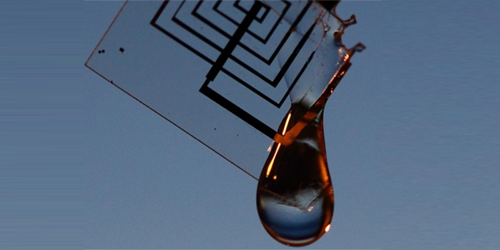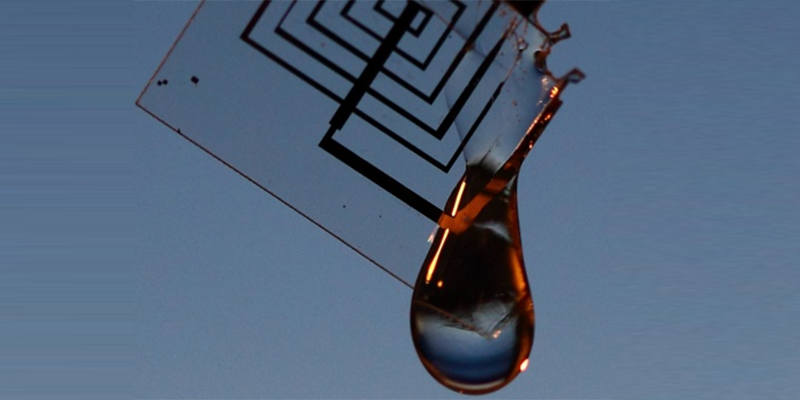Meetings: Highlights from CLEO 2016
The yearly Conference on Lasers and Electro-Optics (CLEO) covers both fundamental and applied research in fields such as quantum optics, photonics, biomedical imaging, fiber-optic communications, and laser technology. The meeting featured talks on solar cells with record performances, ultrahigh-speed optical communication systems, and LIGO’s recent detection of gravitational waves. Here is a sampling of the research presented at the conference.
–Matteo Rini
Silk’s Road to High-Tech
For thousands of years, silk has been the glamorous fabric that drove global trade along routes from China to Europe. But the material’s history might take an unexpected high-tech turn, said Fiorenzo Omenetto from Tufts University, who builds useful devices that exploit the material’s unique properties. Made of water and proteins, silk is biodegradable and biocompatible. And while it is nearly as tough as Kevlar, it is transparent to visible light. Working with materials scientists, Omenetto and colleagues developed ways to reshape silk starting from its basic molecular ingredients. They then engineered it into thin films, nanoparticles, sponges, adhesives, gels, fibers, and other complex patterns with which they could build microlenses, reflectors, optical fibers, and even edible (albeit not tasty) lasers. Biomedical applications are particularly promising: Omenetto’s team recently demonstrated silk electronics that could be implanted in the body without being rejected. The devices could be used to monitor infections or deliver drugs to tissues before safely degrading into the body at a programmed time. And the same properties that make the material biocompatible also make it environmentally friendly—we might soon drink our coffee from perfectly biodegradable silk cups.
Attosecond Lasers for Fundamental Physics and Cancer Treatment
The attosecond scale ( s) is the current frontier for experimental time resolution in physics. With the shortest laser pulses approaching a few tens of attoseconds, researchers can observe ultrafast phenomena such as the movement of an electron wave packet or the oscillation of a light field. Ferenc Krausz of the Max Planck Institute for Quantum Optics and the Ludwig Maximilian University of Munich highlighted how attosecond science is coming of age, providing scientists with reliable laser sources that can be used to build ultrafast “cameras” that can film microscopic processes with unprecedented temporal resolution. These developments—in particular the ability to monitor electrons in real time—may have both fundamental and practical consequences, he explained. Researchers will be able to study electron-electron interactions in complex materials, assess the ultimate speed of electronics, and probe the electronic dynamics that control vital biochemical reactions. The technology may also open prospects for medical applications. Krausz and his team are developing short-pulse sources that could be applied to the early detection of cancer. Such sources are extremely bright and emit a broad spectrum of infrared wavelengths—ideal properties for quick and accurate measurements of a vast range of molecular vibrations, including those that can serve as “fingerprints” of cancerous cells.
Peering into Fatty Arteries
Atherosclerosis is a disease in which fatty plaques build up on the inside of arteries. Such plaques harden the arteries and can suddenly rupture, leading to heart attacks and other problems. Yingchun Cao, who works in a group led by Ji-Xin Cheng at Purdue University, reported on a new imaging tool that could lead to more reliable diagnoses of vulnerable plaques. The scheme is based on intravascular photoacoustic (IVPA) imaging. This method entails sending laser pulses through a catheter onto an artery’s walls. Such light pulses, absorbed by fatty tissues, produce sound waves that are collected through the same catheter and analyzed for molecular signatures of plaques. Existing IVPA approaches, however, have limited sensitivity due to the inefficient collection of the sound waves. This limited sensitivity prevents them from imaging far enough through the plaques to determine how thick they are. Cao and colleagues developed an innovative catheter geometry that allows the optical beam and the sound waves to share the same path during imaging. Compared to previous setups—in which the optical and acoustic beams cross at an angle—such a collinear geometry boosts the imaging depth while keeping the catheter diameter as small as 1 mm. In experiments on animal and human arteries, the team showed that the device could image the full thickness of an artery and reliably distinguish healthy artery walls from those lined with fatty plaques.





